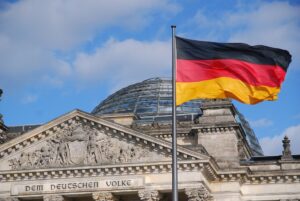16 October, Budapest. Today marks the first day of the Budapest LNG Summit, the first international liquefied natural gas (LNG) conference within Central & Eastern Europe (CEE), featuring leaders from 25 countries participating, who represent the most important international energy companies and institutions as well as the most important enterprises within the CEE region.
The first edition of the conference aims to connect the region’s gas traders with the international supply chain, whose increasingly important segment, LNG and the LNG markets.
Hungary: Tapping into LNG, Support for Croatia’s project
In his opening address at the event, Aradszki András, Hungary’s State Secretary for Energy Issues, stressed security of supply for natural gas:
“An important pillar of the security of energy supply continues to be natural gas, whose weight and role will continue to increase in the near future. The upswing of LNG on the world market, on the one hand, is increasing competition and, on the other hand, its flexible transportability strengthens security of supply.
“The Croatian LNG terminal,” he continued, “which is of direct importance to Hungary, is expected to be set up in 2019, along with bi-directional gas flow for the Hungarian-Croatian interconnector line. The implementation of this investment is being facilitated by the fact that the LNG terminal in Krk and the Hungarian-Croatian reverse-flow interconnector are among the so-called EU-supported projects of common interest.”
Poland’s big plans for natural gas diversification, element of North-South Corridor
Pavel Jakubowski, Gaz-System, LNG Poland, spoke about the “Northern Gateway” concept, which comprises the Poland’s LNG terminal at Świnoujście, and the planned Baltic Pipe project which would deliver gas from Norway’s continental shelf to Poland.
“Their purpose,” he said, “is to bring new independent sources of gas supply, to increase competition, security of supply and to provide more flexibility to the domestic and regional markets.”
The Northern Gateway, he added, makes up a piece of the broader picture of the North-South Gas Corridor, which aims to connect the gas markets of countries starting from the north in Poland all the way down through Central & Eastern Europe to Croatia in the south.
He also outlined Gaz-System’s present and planned additional services regarding its LNG terminal to foster the deployment of LNG as a sustainable fuel, including things like LNG truck loading services and LNG bunkering services.
LNG terminal on Croatia’s Krk island – missing piece of the puzzle
As for the future of a pending project for installing an LNG floating storage and regasification unit (FSRU) terminal on the Croatian island of Krk, LNG Croatia’s Managing Director, Goran Francic, reported that an open season procedure for the terminal that will take place before the end of the year will be critical for determining the level of market interest in the planned capacity of approx. 2 billion cubic meters equivalent of natural gas/year.
Signed contracts for the gas to be delivered, he said, could be expected by the first quarter of 2018.
However, Mr. Francic pointed out the need for development of transmission capacity to be able to move such natural gas to neighboring countries’ markets. He said that one-third of the Krk LNG project had been financed by an EU grant and the remaining 70% by the project’s shareholders.
LNG – challenges for new producers, bright future overall for gas
LNG is a new phenomenon, noted speaker Dr. Hossein Adeli, Secretary General of the Gas Exporting Countries’ Forum, who noted that LNG as a percentage of natural gas demand had grown from 20% in 2000 up to 31% now.
He said, “In 2016, the growth of LNG was 6%. And in 2017, the growth has been 12% up to September in the amount of 263-265 million MMT/annum.”
Mr. Adeli also noted that LNG suppliers from the US had begun exporting to all parts of the world: South America, Asia and Europe, which he said were the three main destinations. Of US exports, he said the total was 3.3 MMT/annum, which is approximately 2% – at present a small amount, while this year America that value has increased to approx. 8 MMT/annum – around 4%.
He commented, “The problem with the US LNG is its price, because we are not sure at what price US LNG is reaching these various destinations.”
Still, according to Mr. Adeli, gas demand is projected to grow by over 50% and will be the number one fuel in power generation. As the number one fuel of choice that can help mitigate climate change, he touted a bright future for natural gas.








